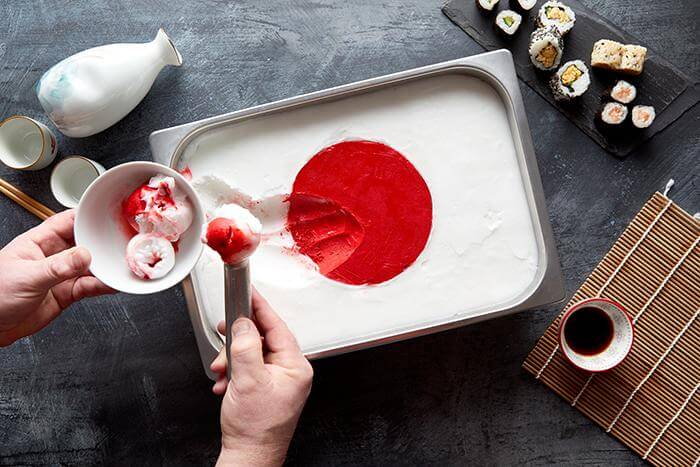The gelato delivery boom
The food delivery market has experienced huge growth over the last three years, and this impressive rise has been accelerated further during the Covid-19 pandemic.
Restaurants and food outlets forced to close their doors have turned to food deliveries as their only source of income – and many have been surprised by their success, with a substantial number planning to continue offering food delivery in the post-pandemic era.
As consumers looked for “affordable luxury” to get them through the lockdown, there is also growing demand for delivered desserts and sweet treats, including a surge in demand for delivered ice cream and gelato, as well as ice cream and gelato-based desserts.
So how can you make the most of the delivery boom?
Takeaway menus
“We are seeing more and more of our gelato parlour customers exploring the home delivery market,” says Henley Bridge gelato technician Mark Eastman, “and they’re having a lot of success. During the lockdown consumers have been craving indulgent treats, and ice cream dessert combos really fit the bill. Things like brownies and ice cream, DIY gelato waffle kits and sharing ice cream sundaes are proving a big hit.”
"Restaurant food boxes are also very popular", adds fellow gelato technician Steve Carrigan. “The pandemic has forced chefs to be inventive and explore different ways of getting their food to customers. Lots of the big names, including Rick Stein and Theo Randall, have created three-course dinners in boxes for customers to complete at home, and ice cream and gelato desserts are a good option for inclusion. Interestingly, many restaurateurs are also planning to continue creating delivery boxes beyond lockdown too.”
Temperature check
Ice cream and gelato are obviously temperature sensitive, so the biggest challenge is to ensure your product arrives intact because no one wants to receive a parcel that’s a soggy, soupy mess!
Perfect packaging
Make sure you pack your gelato goodies in suitable packaging so that it survives the journey to its destination.
“Insulated compostable thermic tubs are the perfect solution for take home and delivery services,” Steve Carrigan advises. “Their excellent insulation qualities keep ice cream and gelato cool for up to 50 minutes before needing to go into the freezer.”
We have a range of thermic tubs which are available in three sizes: 500ml, 750ml and 1,000ml. They’re also knock resistant and come with snug-fit lids to prevent any leakage.
- Textured surface makes it easy to grip
- Doesn't taint or colour contents
- Removable inner liner
- Compostable and 100% biodegradable
For more information, visit
Dessert deliveries
There are two options to consider when planning to offer a dessert delivery service.
- Use third party food delivery services. Uber Eats, Just Eat and Deliveroo are the most well-known, although there are other operators covering specific (usually city centre) locales. They will promote your wares on their website, which is great for expanding your customer base, but are also the most costly option.
- Organise your own delivery system and manage your own bookings and deliveries. It’s not as daunting as you might think! You’ll probably want to set a maximum distance for delivery and need to calculate transport costs, perhaps using local taxi firms.
Go nationwide
All of the big delivery companies, such as UPS and DPD, are geared up to carry frozen goods, and quite a few ice cream and gelato makers are enjoying huge success from shipping tubs of their products direct to homes all across the UK.
UPS offers the following advice for ensuring your goods arrive in tip-top condition:
- Keep cool with dry ice
Dry ice is a great choice for shipping ice cream, as well as other types of food that need to be kept frozen. It’s a much better option than regular ice, which can be heavy—adding to the cost of your shipment—and may dampen the inside of your packaging as it melts. When you’re determining how much dry ice to add to your shipment, be sure to add enough to cover the expected in-transit time, as well as an additional 24 hours of time to cover any delays.
- Consider using gel packs
Gel packs are another option, although it’s worth remembering that they are generally used to keep food between 0 and 15°C, which means that they may not be the best choice for your ice cream products. They do, however, last longer than dry ice, which means that gel packs could be used as a back-up option when shipping ice cream with dry ice. You should also note that dry ice may not be the best choice if you’re shipping ice cream with marshmallows, as they may not withstand the extreme cold of dry ice, which has a temperature of around -78°C.
Download our dedicated gelato and ice cream magazine The Scoop.



